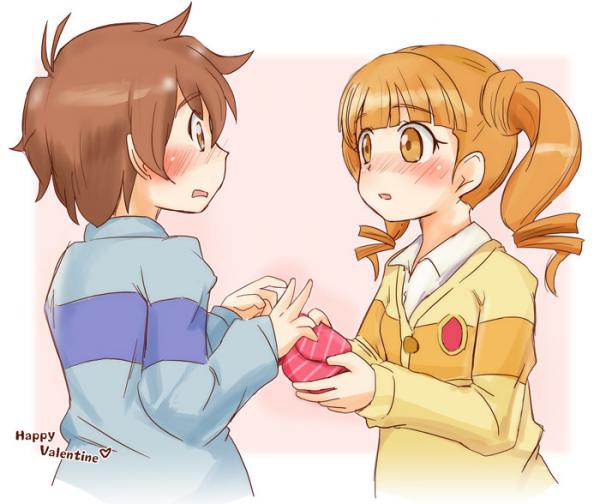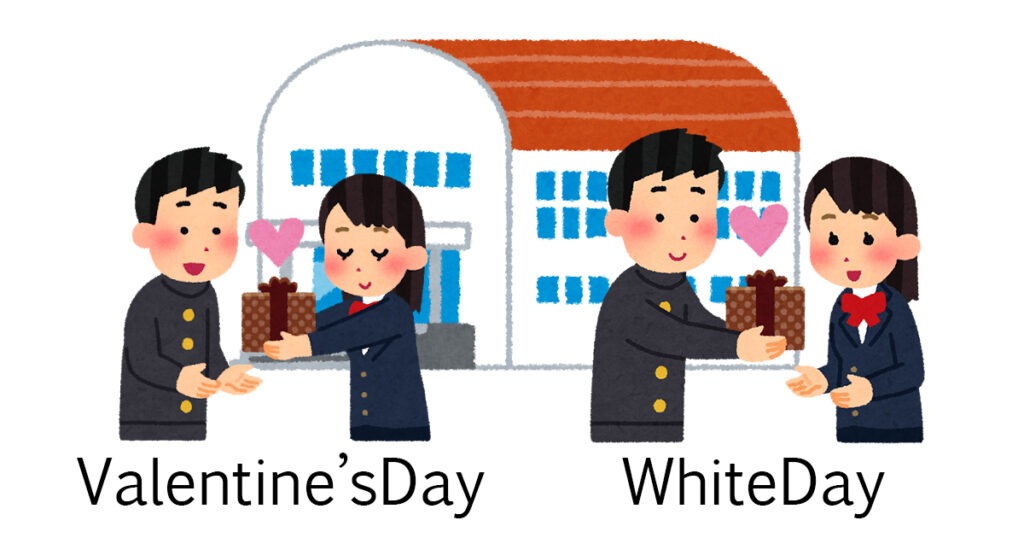Today is Valentine’s Day, following the tradition of Cupid. In the West, Valentine’s Day is a time to express love for that special someone and show affection, often through exchanging gifts and enjoying romantic dates.
However, in Japan, Valentine’s Day takes on a different dynamic where women take the lead. That’s right! They initiate by giving chocolates to men they are interested in.

Origins of Valentine’s Day in Japan
Valentine’s Day seems to have arrived in Japan in 1936 through an advertisement aimed at foreigners living in the country at the time, though its popularity grew significantly in the 1950s. The first heart-shaped chocolates were launched in 1953, and by 1958, Valentine’s Day sales were established to stimulate consumption and the economy.
In Japan, Valentine’s Day revolves around chocolate. On this day, chocolate is exclusively given as a gift (no flowers or other presents), and it’s the girls who give chocolate to boys, not the other way around.

Japanese confectionery manufacturers quickly recognised the potential of Valentine’s Day among local consumers and began marketing heart-shaped chocolates as a way for women to express their “kokuhaku” (confession of feelings), which was considered taboo at the time.
This also became a lucrative opportunity for chocolate sellers and department stores, leading them to develop increasingly elaborate Valentine’s Day campaigns to attract customers. To understand the significance of this tradition, it is estimated that Valentine’s Day accounts for half of all chocolate sales for the entire year.

Traditionally, a girl would prepare homemade chocolates for the boy she likes. However, due to the busy pace of modern life and the commercialisation of Valentine’s Day, it is now more common to buy chocolates instead.
Types of chocolates given as gifts
Interestingly, these chocolates aren’t just for romantic partners. They are also given to friends, family, and colleagues. So, a box of chocolates on this day can range from a declaration of love to a simple social courtesy. Be careful not to mix them up!
- Giri-choko (義理チョコ): Known as “obligation chocolate“.This type is given by women to colleagues, teachers, neighbors, classmates, and other acquaintances. It’s the most common and inexpensive type, meant as a polite gesture. However, surveys suggest that neither women enjoy giving it nor men enjoy receiving it.
- Tomo-choko (友チョコ): This “friend chocolate” is given to friends with genuine affection. It’s a way to show appreciation among close friends.
- Honmei-choko (本命チョコ): This is the “true chocolate“, which women either spend more money on or prepare themselves. It’s given to someone they have romantic feelings for, such as a boyfriend, partner, or husband. The quality of the chocolate and the wrapping are important details.
- Jibun-choko (自分チョコ): This is the chocolate women buy for themselves as a well-deserved treat.
- Gyaku-choko (逆チョコ): This is “reverse chocolate“, where a man gives chocolate to a woman. It’s a rare gift on Valentine’s Day, as men traditionally reciprocate gifts a month later on White Day.

White Day
Japanese men aren’t off the hook on Valentine’s Day. In fact, White Day, celebrated on March 14, is their turn to reciprocate. On this day, men are expected to give something back to the women who gifted them chocolates a month earlier, and it’s not limited to just chocolates.
White Day didn’t become popular until the 1980s, when the National Confectionery Industry Association of Japan launched a successful campaign. This marketing strategy introduced a “response day” for men to return the favour for the gifts they received on Valentine’s Day.

On White Day, men are expected to give gifts worth 2-3 times the value of what they received. Failing to reciprocate is seen as a slight, and giving the exact same amount of chocolate is taken as a sign that the man wants to end the relationship.
The day is named after the colour white, symbolising purity and, in Japanese culture, associated with innocent, youthful love.
Valentine’s Day controversies and changes
Although it’s been customary for girls to give chocolates on Valentine’s Day and for boys to reciprocate on White Day, there has been growing criticism of the tradition of giving giri-choko to bosses and co-workers. Today, many women (and men) see this practice as outdated and stressful “forced giving.”
Women often feel significant pressure to spend large amounts on chocolates to avoid offending their bosses and colleagues. In response, many companies in Japan have banned the practice to relieve this burden.

Instead of participating in giri-choko giving, many Japanese women now prefer to give jibun-choko or tomo-choko to family and friends, or even prepare homemade honmei-choko for someone special.
In a gesture of solidarity, an increasing number of Japanese men are also choosing to forgo White Day gifts and instead give gyaku-choko to their wives, girlfriends, or lovers on Valentine’s Day.



